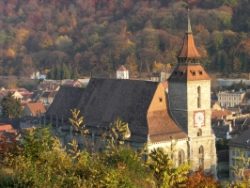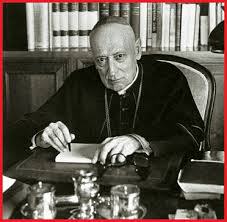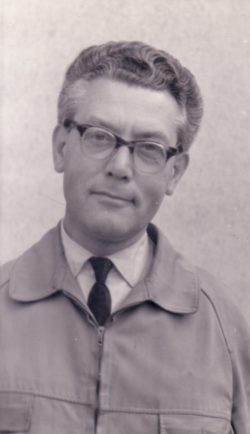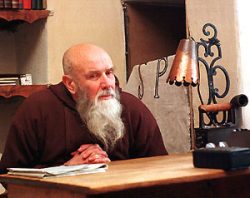Concepts:
- atheist ideology
- different denominations of christian religion: orthodox, Lutheran, catholic, Calvinist
- religious orders (in the Catholic Church): monks and nuns
- Peace Movement
- Vatican, the Holy See
- Religious samizdat
- Base community
- Religious Movements
- “Sects” (derogatory term for new religious movements)
- Patriarchate
- Ostpolitik of the Vatican
Competencies:
Knowledge
- understand the complex role of anti-religious ideology in relation to the socialist regime’s policies and also the coordination role played by the Soviet Union in the implementation of the anti-religious policies throughout the Soviet Bloc;
- understand the diversity of strategies, local contexts and periods;
- understand the connection between anti-religious tendencies and other social and historical factors;
- get to know different strategies of the regime towards religious communities; especially the typical tendencies of persecution, control and restrictions;
- get to know some collaboration and opposition strategies of religious communities;
Attitudes
- be open to a complex analysis of religious cultural opposition and the anti-religious strategies of the regime;
- consider religious freedom as a fundamental human right;
- esteem examples of resistance against measures of control, restriction and persecution, but reflect critically on the complex interplay between collaboration and opposition;
Skills
- be able to find information on religious resistance in their own country;
- be able to compare different situations in the field of religious cultural opposition;
- be able to situate religious opposition in the field of cultural opposition;
- be able to search for local information in their own circles and see them in the context of cultural/religious opposition;
- be able to critically examine different interpretations and attitudes towards religious communities.
by György Mészáros
Religion, churches (communities) and the regime
“Religion is opium of the people”. This is one of the most quoted sentences of Karl Marx, however it is often cited incompletely and without its context. Marx wanted to analyse how religion works as an ideology that helps the acceptance of hierarchical structures in society. Later, this philosophical analysis was used as an ideological justification for the policies of socialist regimes against religion and churches. It is true that one of the bases of these policies was this atheist ideology which conceived religion as a negative factor in the building of the socialist society. But on the other hand, these policies were also related to very complex historical factors and social circumstances, and they were not only driven by ideologies. Some of these factors were:
- the influence of the Soviet Union (following policies against churches, or in the case of Romania, building good relationships with the orthodox church);
- the high social and political influence and big properties of certain churches before 1945 (because of a “socialist economy” built upon state ownership, the state nationalized church properties);
- the importance of influencing the ideological mindset of everyday people (especially the working class) ;
- the need to develop a new collaborative elite, etc.
The policies might be considered as political actions against religious communities because of political (sometimes more than ideological) reasons. This interpretation is supported by the fact that there were very different strategies of dealing with religion and churches at different times and in different local contexts. It is impossible to outline just one model from the whole region for the entire period. For example, in Romania, after 1947, the communist party and the state considered the Romanian Orthodox Church as an ally that could help maintain a good relationship with the Soviet Union through the connections between the Romanian Church and the Russian Orthodox Church. This relationship, with its high influence, was also useful in spreading the communist ideology. The Catholic Church on the other hand, in Romania and elsewhere, was seen as the political hand of the Vatican and suffered serious persecution. The different strategies were due to the various structures that characterized the different communities. The Catholic Church had its head outside of the country and the Pope was considered one of the most important enemies of the regime, while certain catholic religious orders (Jesuits, Franciscans, Salesians, etc.) also had their centres in Rome, or in foreign Western countries, and thus bore the possibility of “dangerous foreign (Western) influence”. Protestant churches were not centralized, and orthodox churches had their own national patriarchates with some connection to the orthodox community.
It is interesting to see how different other factors were in connection with religious issues. The Croatian State Security Service Collection on Religious Communities mentions the incitement of ethnic hatred as “hostile activity” of the church. While it is certainly a distorted description of what really happened in churches, it is true that ethnic and religious differences were often connected. The case of the Turkish minority in Bulgaria provides not only an example of this connection, but it also shows how the regime’s policy towards certain groups sometimes changed fundamentally over time.
Despite the different approaches, there are some typical strategies on the side of the regime and some typical strategies (ways of dealing with the situations) on the side of religious communities. The latter are part of the larger history of cultural opposition in which religious communities had an important role in all the countries. The aim of this lesson is to help you understand some typical strategies of the socialist regime towards religion and religious communities, and to study different ways of cultural opposition of these communities as examples.
Control and restrictions
In each of the countries involved in the project there was a strong strategy from the regime to control the different religious communities and restrict their activities. Most of the church properties and institutions were nationalised, education activities were limited, church press was under surveillance, and quite often the church hierarchy was also under control.The regime presented the limitation of power of religious organizations in state matters (education, ownership of large institutions) as a project of modernization that separated state and church. In reality, the state and the party exercised so much control over religious organizations and allowed very little autonomy, so instead of the proposed separation the state simply controlled the religious organizations. The freedom of individuals to practice their religion was also restricted. One of the typical restrictive policies was the abolishing of certain communities. The Greek-Catholic Church in Romania was forcibly incorporated into the Roman Orthodox Church (see the story of Cornea Doina). Catholic religious orders (like Jesuits, Franciscans, Salesians): communities of monks and nuns were banned from existing and working in Czechoslovakia and in the Soviet states. Smaller churches or movements (often considered as sects) were illegal communities as well (for example: the Universal White Brotherhood group in Bulgaria). In Hungary, only three male orders (Benedictines, Franciscans and Piarists) and one female community (School Sisters) were allowed to remain, with two denominational schools each. In other countries, like Poland and in the states of Yugoslavia, the orders were permitted to work, but with certain limitations (for example, they could not own schools). State security services often surveilled and controlled religious groups, and archived their “dangerous” activities. An example of this activity can be found in Croatia (the State Security Service collection) and also here. Interesting examples from Hungary regarding the secret surveillance of a “sect” (Christian community) can be found here and here. The Hungarian State Security also recruited spies among religious leaders and created an atmosphere of fear where one could not know if another member or leader of the community was submitting reports on their conversations and activities. Other, less restrictive, control mechanisms were developed later in some countries, and this was particularly/especially true in the era of consolidation. With the election of John XXIII, the Vatican changed its politics and attempted to collaborate with the socialist countries: this new tendency was called the Ostpolitik of the Vatican. One example of this consolidation is the Commission on Religious Matters of Vinkovci Municipal Assembly, which followed the activities of religious communities and later served as the promoter of dialogue between church and state.
Nevertheless, it is important to note that in other countries (especially in the Soviet Union) repressive control remained strong, even during this period. Certain denominations were denied the right to exist and were forced join other communities (like the above-mentioned Greek Catholics in Romania, or like Pentecostals who had to join Baptists in Latvia, etc.), or else were simply treated as illegal sects.
In several countries, the state controlled both the nomination and the work of catholic bishops. In Hungary, beside each bishop there was a state functionary nominated by the State Office of Church Affairs who controlled his activities. They were known as “moustached bishops” in catholic slang (Catholic priests usually didn’t wear moustaches at that time, so this expression indicated that the state functionary was a layman, who led the diocese like a bishop).
Besides controlling the churches, the state and the party carried out anti-religious propaganda, depicting churches, church leaders and religious beliefs in a negative light, often as oppressing and depleting the people. You can find examples of anti-religious Soviet propaganda here.
Persecution
Control and persecution went hand in hand, although the line between the two is not always easily defined.. Death sentences, killings, deportation, conviction and the torture of religious leaders or prominent community members should certainly be considered persecution. Some of the control mechanisms mentioned in the previous chapter were accompanied by clear persecution, as well, such as the forced incorporation of Greek Catholic Church of Transylvania into the Romanian Orthodox Church or the abolishing of religious orders in Czechoslovakia and Hungary with deportations, relocations, convictions. Religious leaders often were sentenced in show trials, with the most famous ones being József Mindszenty‘s trial in Hungary and Alojzije Stepinac’s trial in Croatia. Mindszenty was a strong and uncompromising opponent of the communist regime, and became a symbol of resistance for a lot of religious communities.
Open persecution was more prominent in the beginning, or in the 1950s in most of the countries. This document for example gives an overview of religious officials convicted in Croatia from 1944 to 1951. Clerics and other religious community leaders or members were imprisoned, tortured, deported or attacked on the street, one example being the Slovenian archbishop Anton Vovk, who was set on fire by communist activists in 1952. However, persecution remained strong, especially in the states of the Soviet Union, and executions, killings and convictions continued to happen even in the late era socialism. Jerzy Popiełuszko, for example, was murdered in 1984.
Co-existence and collaboration
Despite restrictions and the threat of elimination, religious communities continued to live under socialist regimes. Alongside resistance and opposition (see the next part), the communities were able to find ways of surviving, co-existing or even collaborating with the system. Even under harsh conditions attempts were made to find avenues of co-existence, which is demonstrated by the letter (in 1959) of a Lithuanian priest, father Aliulis .
Different strategies of co-existence were:
- carrying out the work of existing institutions and organizations (churches, schools, theological faculties, accepted church organizations and committees),
- conserving memory: archiving (Archive of the Saxon Church and Emilian Cioran in Romania),
- legal (allowed) press and publishing activities,
- building new church buildings or restoring old ones like the Black Church in Brașov.
This latter collection gives insight into a long and interesting story in which very different strategies of the socialist regime can be traced: restrictions, control, tolerance and collaboration. The story also represents one of the rare cases when the socialist regime permitted a local national minority to pursue its own initiative, as well as being representative of the connections between religiosity and ethnicity.
Some religious leaders and representatives looked beyond survival and co-existence, and collaborated with the regime (state authorities, communist party). In several countries (Poland, Czechoslovakia, Hungary, Slovenia, Croatia, Bosnia-Hercegovina), for example, movements of Catholic priests were created that served as the basis for the building of a local national church loyal to the regime,in opposition to the Vatican and often to the bishops. These movements were a variegated group; there were priests who were enthusiastic about certain communistic ideas, or had been in contact with the party during World War II; others were forced to enter the movement by blackmail or torture; there were some who joined because of being in opposition with their bishop; and finally there those who were convinced that through this compromise they would be able to maintain a certain autonomy and have more opportunities for church activities. Another method of collaboration was to be a secret agent of the state security services inside the church. Years later, several church leaders were also revealed to be secret agents. Although, it is important to note that the Hungarian clergy was not overrepresented among state security informants, the figures cited in the Registry are impressive: according to the Archive of the Hungarian State Security, in total 1799 spies were involved from churches, and “around 1970, more than 60 percent of the Hungarian Episcopacy consisted of informers, and at least minimum 80 percent of the archbishops elected after 1969 were also spies”. Szilárd Keresztes, who was bishop of the Greek-Catholic diocese from 1988 to 2007, had previously been an agent.
These revelations engendered serious discussions in the church and in society about how to deal with the past of divided religious communities during the socialist regime. Those who were persecuted and those who contributed to the persecution were members of the same community. Some people resisted the collaboration attempts. Aurel Cioran for example. refused to collaborate with the Securitate despite the fact that the state allowed him to visit his brother in Paris.
Opposition and resistance
We have already seen examples of resistance and opposition. Those who were convicted, tortured or killed (like Mindszenty and Popiełuszko) at times became iconic figures and symbols of resistance for different kinds of cultural opposition.
In times of persecution and severe restrictions, many religious communities and leaders continued their work in illegality. A clandestine way of life became the norm for a lot of communities, the banned youth Calvinist congregation of Pasarét in Hungary being one example. Religious monks and nuns conducted their prayers, meetings, gatherings among themselves or with other believers (including young people, who it was forbidden to work with) in secret. There were clandestine networks with secretly nominated leaders, religious samizdat, and with different activities (e. g.: spiritual retreats camouflaged as mountain excursion). These networks often had connections with foreign centres and communities, and in turn received some help. It is possible that attempts were made to communicate with the “Western world” (and churches), but this would not have been not easy due to strict border control.
Doina  Cornea’s doll, through which the dissident smuggled texts abroad depicting the conditions of the Greek Catholic community in Romania, is one example of a creative solution to this problem. Other types of clandestine communities also continued to exist and work, such as the aforementioned esoteric group of Universal White Brotherhood, or the Turkish minority in Bulgaria (the latter fought for human and religious rights).
Cornea’s doll, through which the dissident smuggled texts abroad depicting the conditions of the Greek Catholic community in Romania, is one example of a creative solution to this problem. Other types of clandestine communities also continued to exist and work, such as the aforementioned esoteric group of Universal White Brotherhood, or the Turkish minority in Bulgaria (the latter fought for human and religious rights).
New communities were born, too. In Hungary, the clandestine monastery of cistercian nuns founded by Ödön Lénárd and Ágnes Tímár, and the Bokor Base Community founded and led by piarist György Bulányi. The latter was an extensive and important community that presented an alternative form of practicing the Catholic faith within the framework of small base communities. This community was also in opposition to the local Catholic hierarchy and the Holy See.
Many of the dissidents who carried on with their secret work or were leaders in these communities faced years in prison, relocation or even execution. Ödön Lénárd, the co-founder of the Cisterciensis monastery of Kismaros was the priest who was in jail for the longest time in the country. His correspondence with his brother shows his spiritual resistance throughout the years in prison.
Opposition was often encouraged and helped from abroad. Emigree clergy and some organizations tried to influence religious groups politically and promote religious rights in those countries. However, these interventions were not always received well by community members in socialist countries, as the example of the Action of Light organization shows. Its actions from abroad for communities in Latvia were criticized by some believers and clergy due to the fear that these attempts would be used by authorities to persecute them or practice stronger control.
The life of Áron Márton, Roman Catholic archbishop in Romania, shows the different forms of persecution, restrictions and co-existence. He was placed under house arrest in 1956 and was not released until 1967. He continued his work tenaciously during different periods and became the symbol of resistance in Romania, where his figure overcame religious and ethnic barriers.
In late socialism, a slighter form of opposition appeared in the shape of grass-root catholic communities/movements, such as the Catholic Charismatic or the Focolare movements. These communities were not usually seen with hostility by the clergy and bishops (like the base communities), although they remained relatively independent from the Church hierarchy. These communities with their quite autonomous organizations represented counter-cultural spaces in late socialist times. A Hungarian collection of István Kamarás, offers rich insights into the life of these movements and the socio-cultural and ecclesial context of the 1980s in the country.
Secretly produced and distributed religious publications were a common method of cultural opposition. Good examples of religious samizdat are represented by the collection of Slovak Samizdat and by the Catholic Press in Lithuania. Due to the quality of the publications, religious samizdat not only drew the attention of religious people, but also the intelligentsia. For example, in the newspaper Rūpintojėlis of the catholic opposition network, there was an article about literature development in Soviet Lithuania. .
There are several other initiatives that show how dissident intelligentsia found connections with religious opposition in different contexts. In Lithuania, father Stanislovas created a site that attracted a lot of people from the intelligentsia. His restoration work accompanied by his philosophical culture created a sort of alternative reality.
This indirect way of opposition (related not only to religious resistance) had different other forms – such as the case of Father Stanislovas’ work – and activities related to (religious) art (such as the Polish Weeks of Christian Culture and the Artists’ Priesthood) could provide alternative counter-culture spaces of autonomy, freedom and opposition in the less severe years of the regime.
Religious events in general often provided opportunity for indirect expression of opposition toward the system. The youth meeting of Nagymaros in Hungary was a very typical example of this. It had an exclusively religious character without direct political dimensions, but it transmitted a different morality from that propagated by the party, and represented an alternative youth-movement-like experience vis-a-vis the communist youth movement.
Tasks:
- Look at the search results for the expression “religious activism” in the Registry, and try to find examples of different strategies presented in the lesson: opposition and resistance (secret meetings, clandestine communities, religious samizdat, martyrdom, communication with world beyond the borders, organization of communities and movements); “soft” opposition (religious movements not in direct opposition, artistic activities, archiving and documenting); submission and collaboration (priest organizations friendly with the regime, spying in religious communities, following the directives of the state in religious matters); “soft” collaboration and co-existence (communication with the state and the party, dialog). Sometimes, the activities can be categorized under different strategies.
- Try to find examples of religious publication and samizdat from your country in the Registry. Make a short presentation on the different publications, try to find other sources (outside of the Registry), and in your presentation use what you have already learnt in the lesson about samizdat.
- Look at the story of the Black Church in the Registry and make a creative, visual representation of the different strategies that are present in the story, both from the side of the regime and of the community.
- Collect different opinions about religious groups in your contexts (family, friends, acquaintances) and with the help of your teacher, identify different attitudes towards religion (for example: refusal, respect for charity activities, respect for different views, strong belonging to one group, strong esteem of only one religious group against the other, indifference, considering religion and/or religious activity as harmful for the society, etc.) and their relation to the right of religious freedom and in connection to respect toward religious pluralism. Try to identify differences and similarities between these attitudes and the attitudes (interpretations) of the regime towards religion and religious groups.
- Pick some typical figures presented in the lesson (the persecuted monk, the collaborator, the martyr, the religious leader who wants co-existence, etc.), and with the help of your teacher, in a role play create an imagined discussion among these figures. Prepare for the discussion with arguments about the advantages and disadvantages and moral problems of the different strategies, and the figures should represent these arguments in the discussion led by a moderator.
- Group project: collect some information in your local context about religious communities, interesting stories during the socialist era (using document analysis, interviews, literature search, etc.), and prepare a memorial on religious opposition. Memorials can have very different forms: an artistic work, a celebration, a public lecture or round-table organized by the students, a small exhibition, a small play, etc., In the memorial, you should include the information that you gained during the process, in some way.
- Look at this collection and find representation/examples for different strategies presented in the lesson (see above).






